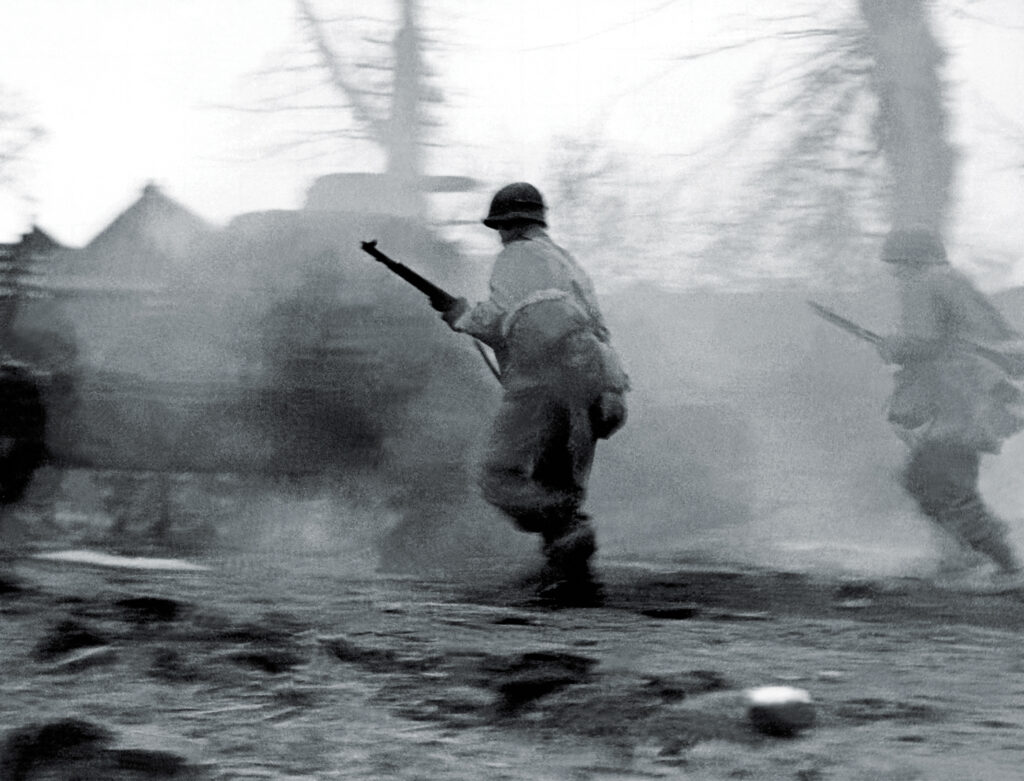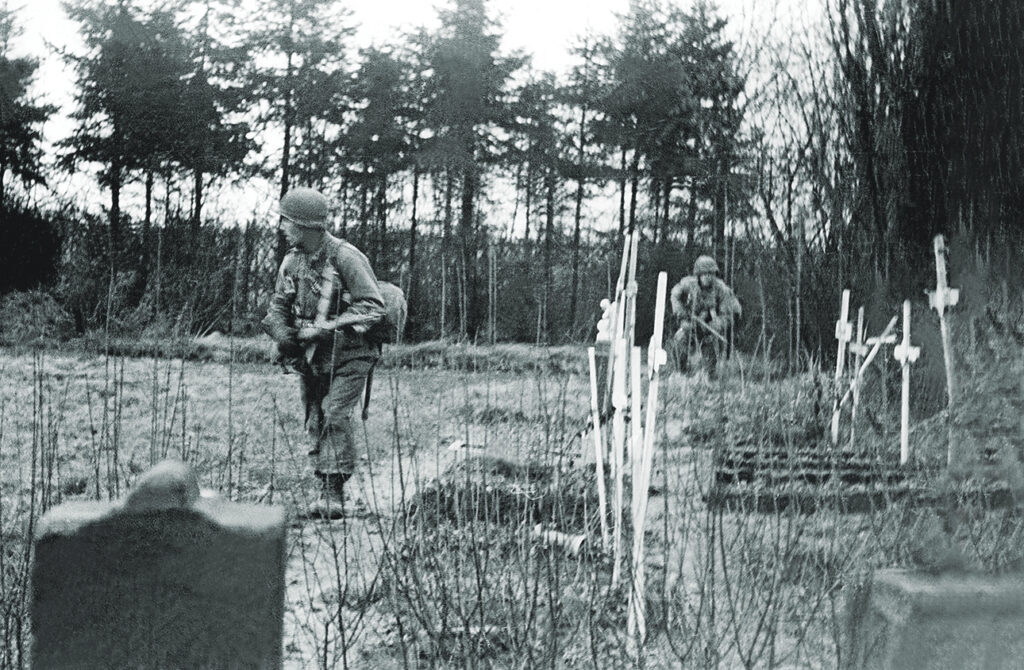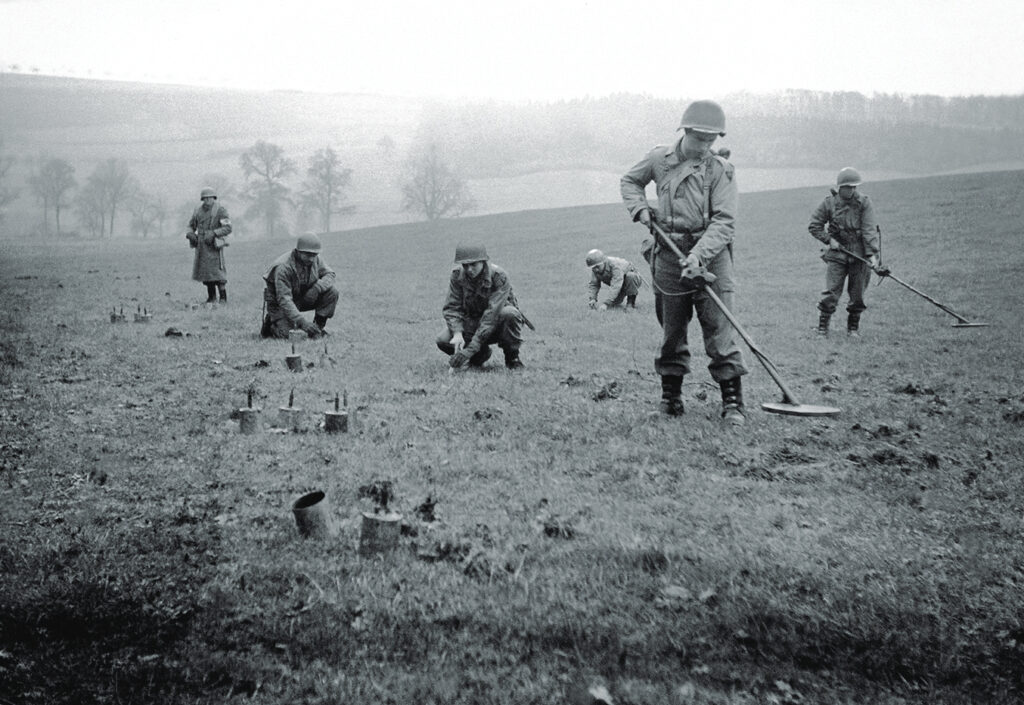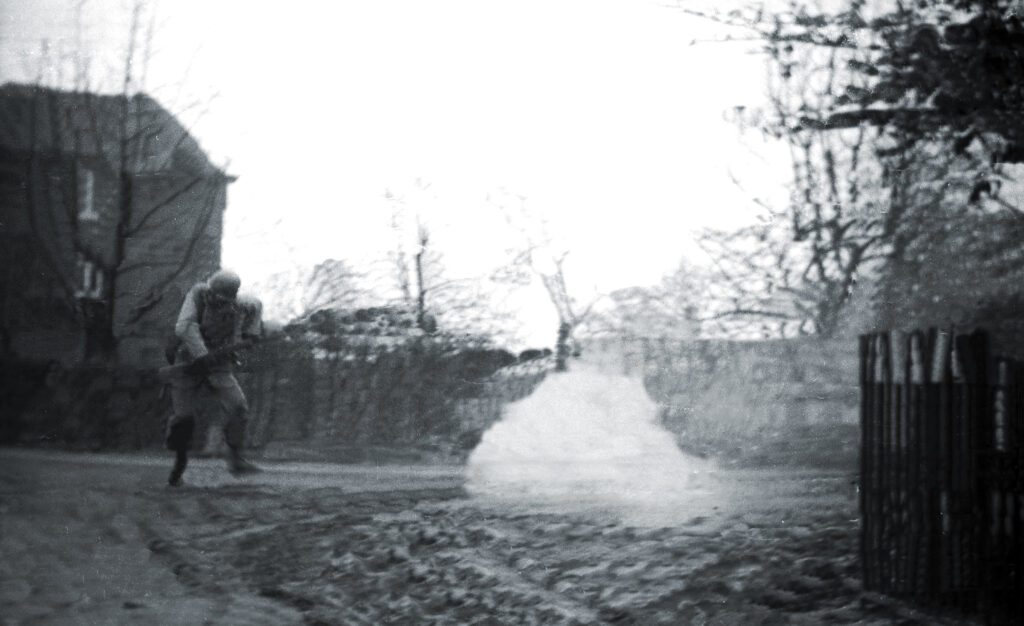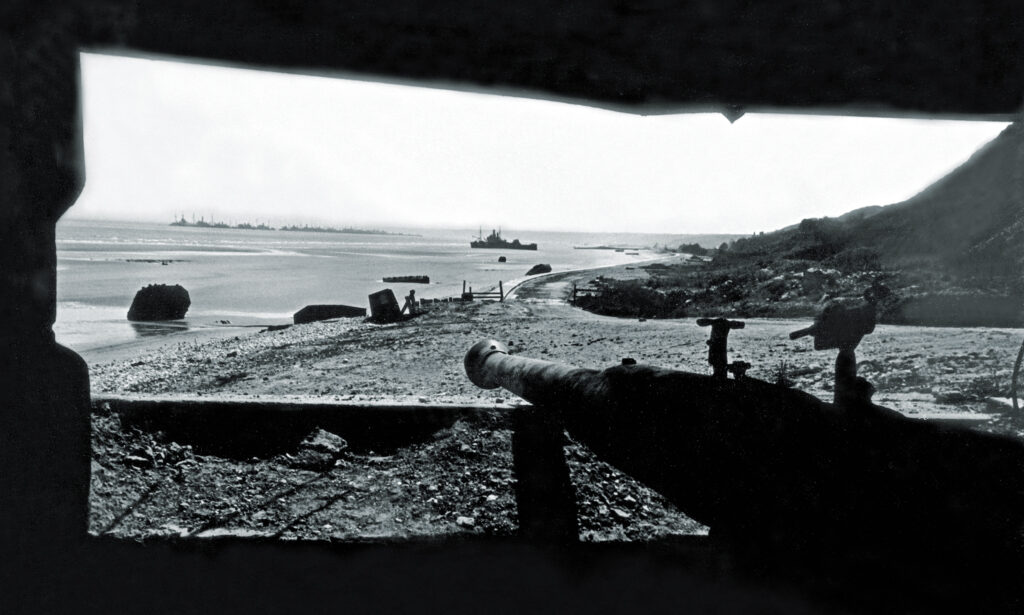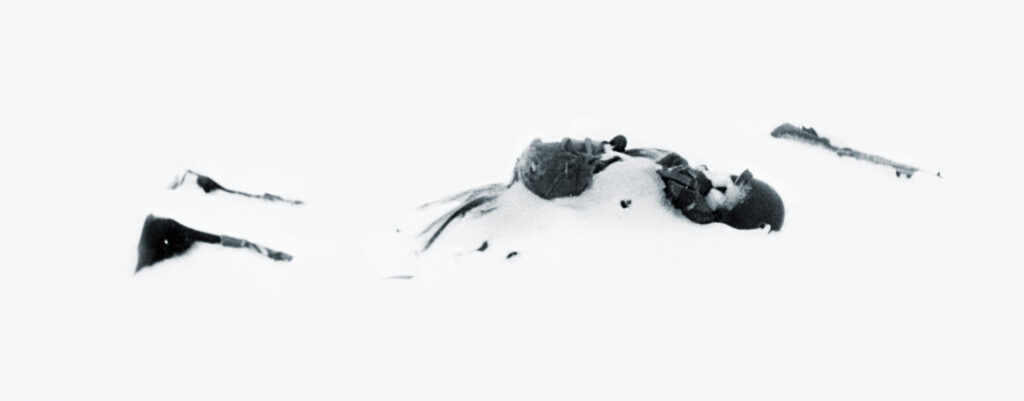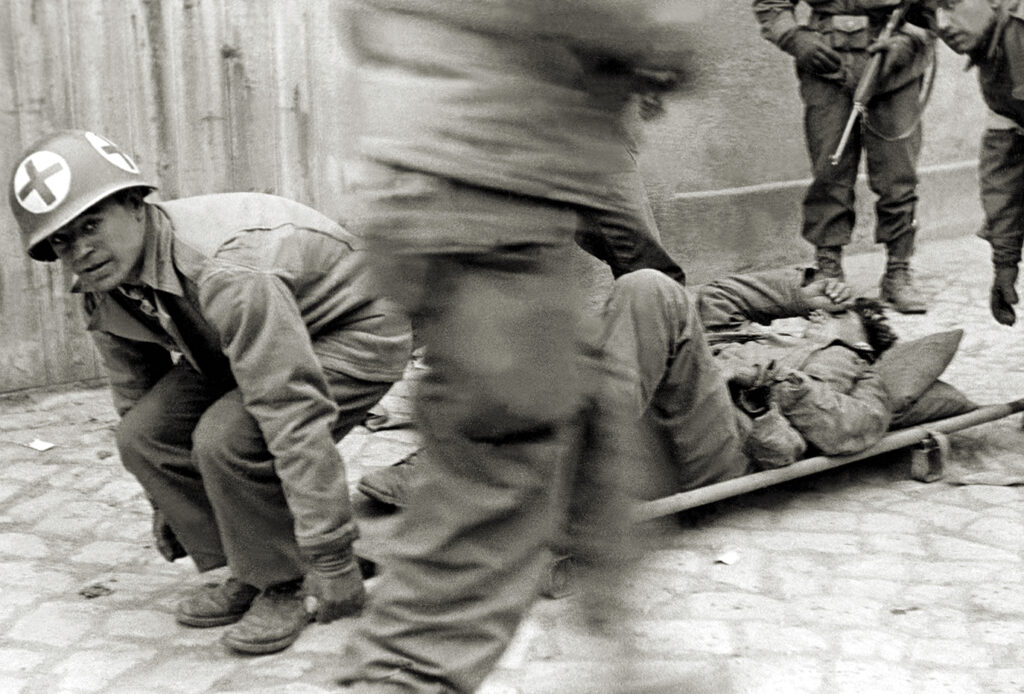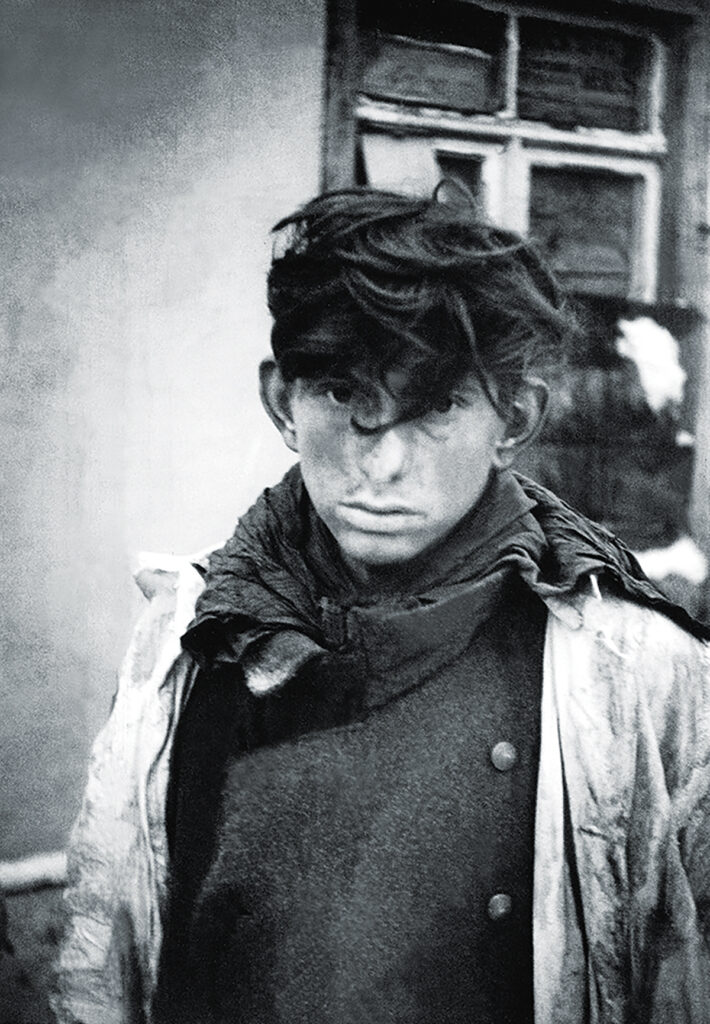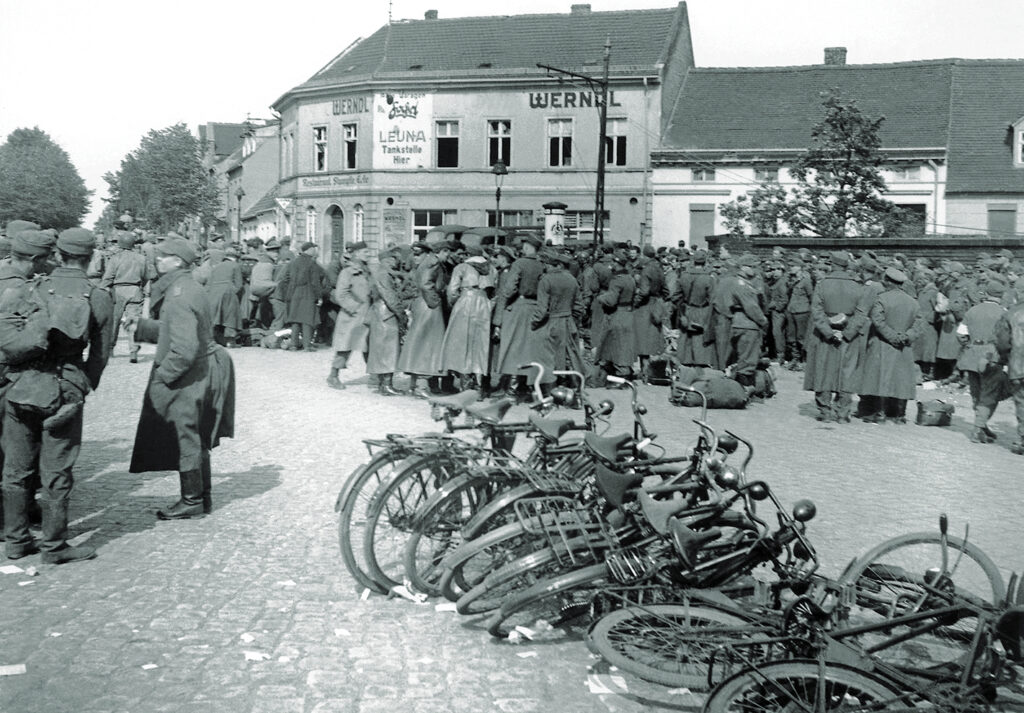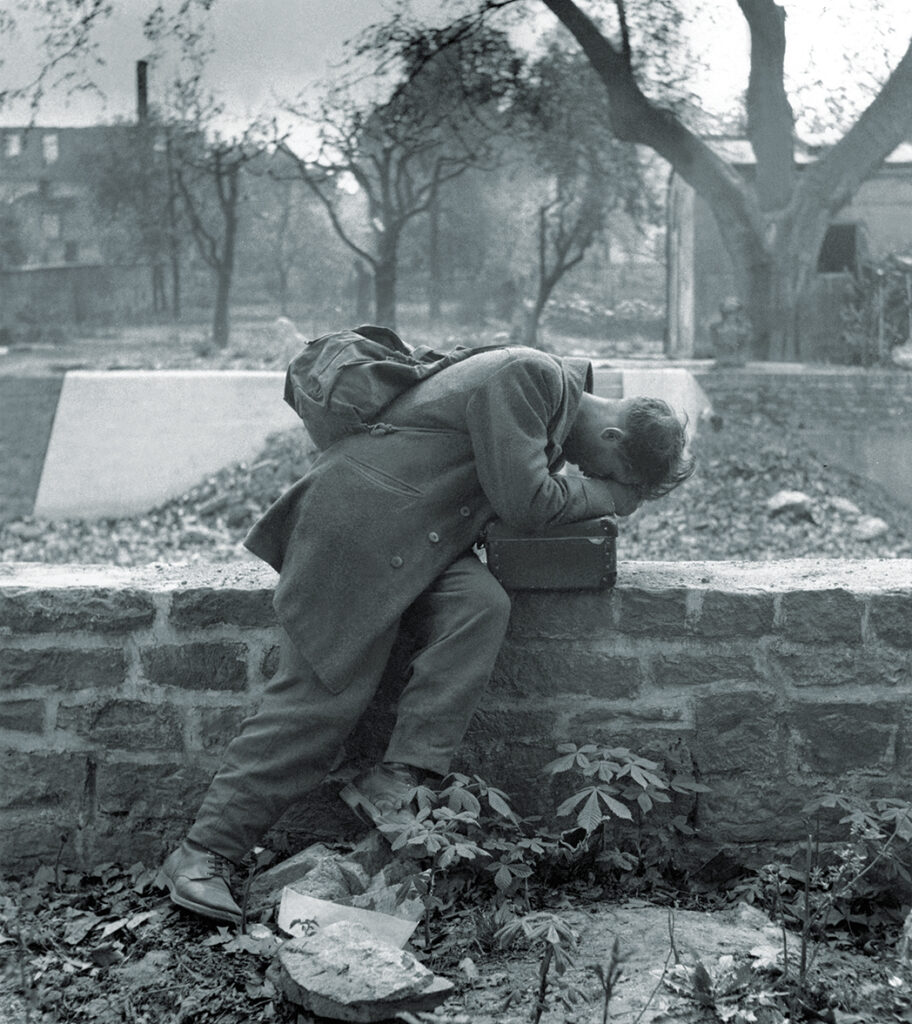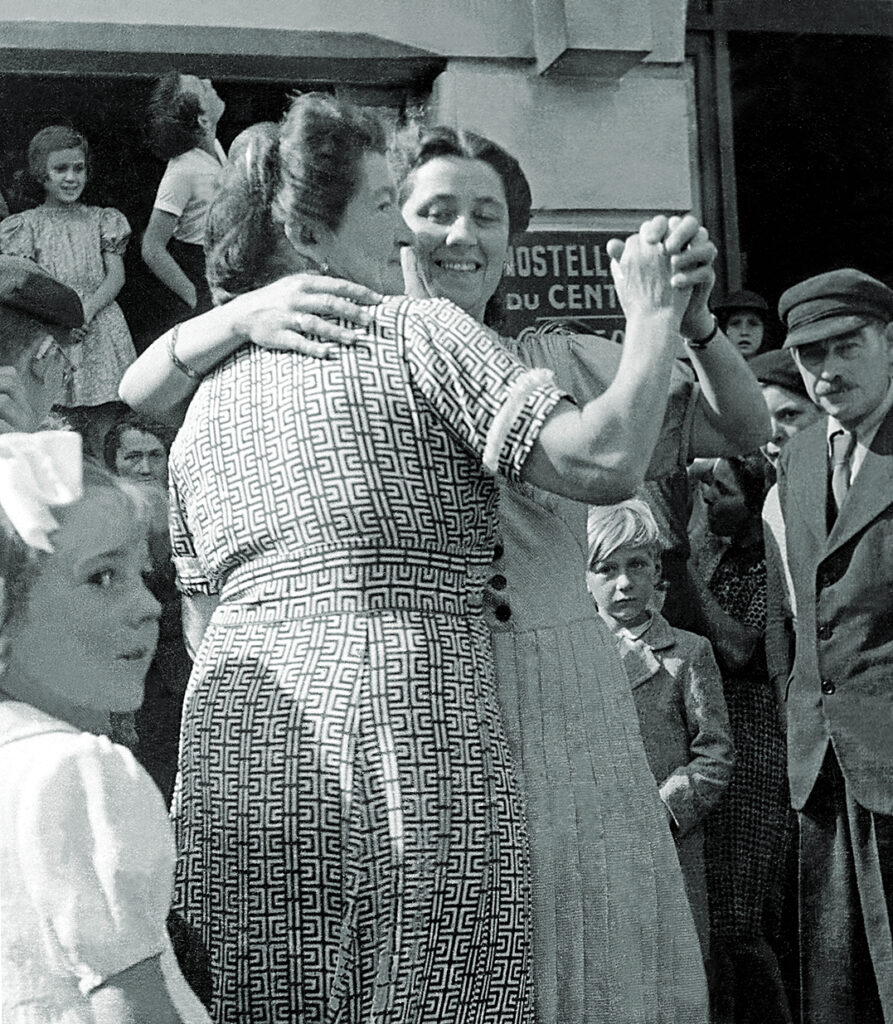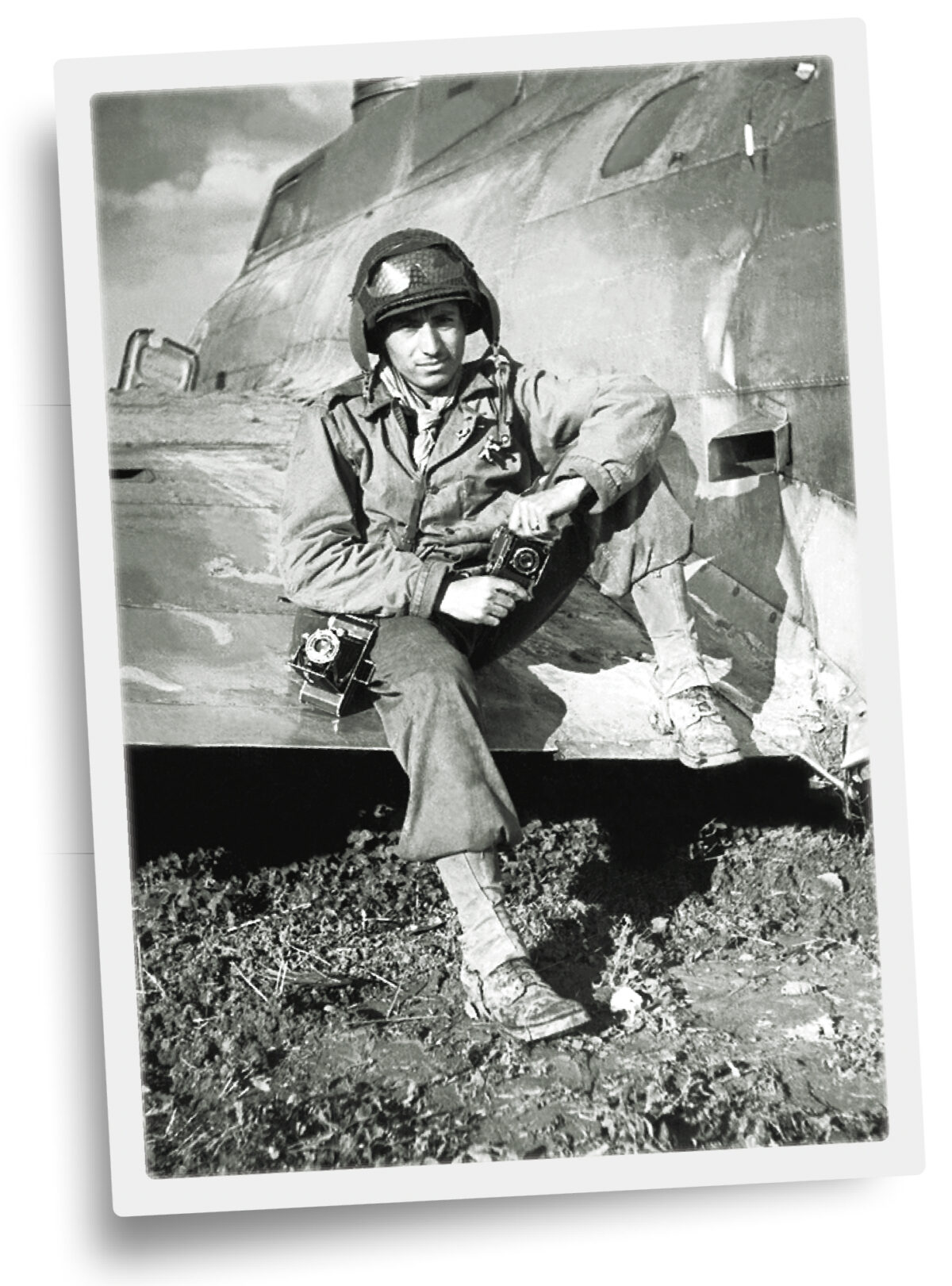As U.S. Army private Tony Vaccaro’s boat sailed for Normandy on D-Day+12 in June 1944, he kept his M-1 rifle at the ready but had a very different tool hidden beneath his coat—his Argus C3 35mm camera. Defying army regulations that forbid combat photography except by Signal Corps personnel, Vaccaro used his camera to take surreptitious pictures of Allied forces in the English Channel. Those were the first of more than 8,000 images he snapped during his 272 days with the 83rd Infantry Division as it battled through France, Belgium, Luxembourg, and Germany. Vaccaro and his camera became unique witnesses to World War II, capturing intimate moments—sometimes celebratory, other times brutal and raw—that bypassed the military censors and recorded the U.S. Army’s fight east across Europe.
Vaccaro, an Italian American who was raised in Italy but relocated to the U.S. at the outbreak of World War II, was drafted into the U.S. Army in 1943 at age 21. He tried convincing the army to let him join the Signal Corps so he could pursue his passion for photography, but Uncle Sam rejected his request on account of his youth and lack of photography experience. He ended up in the infantry instead. Camera always at the ready, he took it upon himself to chronicle the daily struggles of the soldiers in his unit with an honesty and immediacy that often eluded those in the Signal Corps, whose heavy cameras limited their mobility. Eventually, the army loosened its regulations and allowed Vaccaro to take photographs openly, but made it clear he was a soldier first and a photographer second.
Vaccaro’s images range from happy scenes in liberated French villages to the harsher truths of war. Once, when shying away from an ugly scene, he reminded himself, “Tony, what kind of witness to this war are you? You go back there and take this picture.” Two of his most famous images chronicle the deaths of two men in his unit, both taken in Belgium on January 11, 1945, during the Battle of the Bulge.
After the war, Vaccaro became a renowned fashion and celebrity photographer, but his experiences in Europe remained with him. He remembered, years later, “You are in the grip of these nightmares. The faces of the people you’ve killed. They just don’t leave you alone. I’m not the same man.”
Tony Vaccaro died at his New York home at age 100 in December 2022.
